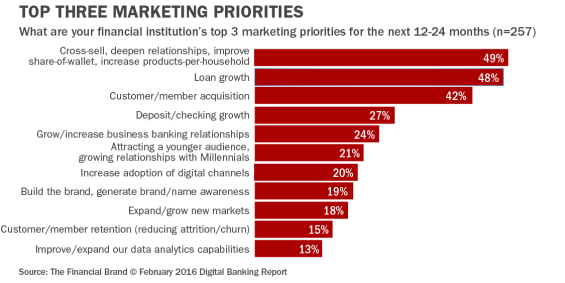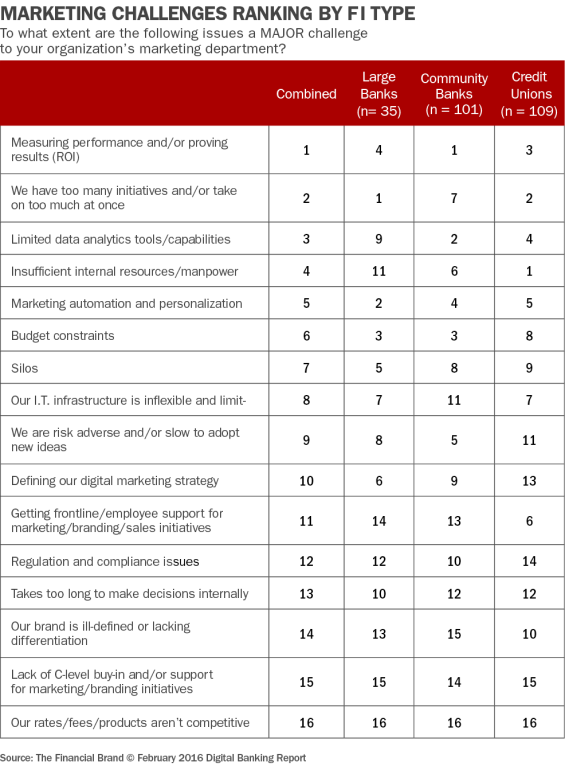DIGITAL-SCHMIGITAL

Jeff Lee, co-owner of the dealer ad agency Instant Events, designs a printed direct-mail flier for a Toyota dealership.
Woody Folsom knows what keeps customers coming into his auto dealerships in southern Georgia, and it isn't the Internet.
"I'm not going to use Facebook," declares Folsom, who last year sold about 1,500 new Chevrolets and other GM vehicles, 1,200 new Fords and almost 1,000 new Chryslers -- all through the power of radio advertising around his home base in Baxley, Ga., population 4,400.
"I'm not going to put my customer's picture on Facebook after he's bought a $50,000 truck from me," he says. "That's not right. It's nobody's business."
Deep into the digital age, as automakers and retailers stampede to online marketing, a curious truth remains: Many car dealers prefer to advertise the traditional way -- radio, TV, direct-mail fliers and even the occasional full-page ad in the local daily newspaper. They like the human touch. They are pleased with the results. And like many things in the auto industry that are not always easy to explain, it just feels right to them.
"I guess I'm old-fashioned," Folsom concedes. "And maybe somebody'll tell me I'm not doing things the new way. But it's working fine for me."

Dealer Woody Folsom stands in front of a green screen to make a TV spot. "I guess I'm old-fashioned," he says of his preference for traditional advertising "but it's working."
More dealers agree with Folsom than the merchants of digital marketing probably would care to admit. Even as the industry rushes into a more Internet-based reality, big money still is going into legacy media.
In its most recent forecast of auto ad spending in late 2014, Borrell Associates predicted that dealers would spend more than $2.1 billion on newspaper advertising in 2015. That amount was down precipitously from just a few years earlier, when busy full-page dealer ads crowded Saturday newspapers to capture shoppers on their day off. As recently as 2013, dealers spent $3.1 billion advertising in newspapers.
But often lost in the discussion is the point that printed newspapers still were expected to represent the second-largest dealer advertising media, after digital. That's despite all that has been said about the decline of local daily newspaper readership in iPhone-equipped America, as multitasking young people turn to Instagram, BuzzFeed and Gawker to follow the world.
Radio rises
At the same time, radio has actually increased as a dealer advertising medium since 2012, growing from $641 million to a forecasted $746 million, according to Borrell. And despite predictions of the demise of traditional TV in a bubbling world of Internet program viewing, video-streaming over mobile phones and the rise of on-demand formats such as Netflix, Hulu and YouTube, car dealers were on track to spend $1.3 billion on TV ads in 2015, according to Borrell.
That would be down from $1.6 billion in 2013 -- but not down enough for anyone to declare TV ads anywhere near obsolete.
"I like TV," says Vic Koenig, owner of Vic Koenig Chevrolet in Carbondale, Ill. "It's working for us. And working in ways that I'm afraid the Internet can't deliver."
Koenig sells about 90 new and used vehicles a month. He says radio and TV get the lion's share of his ad budget to compete in his market, which is heavily tilted toward working families, college students from nearby Southern Illinois University and lower-income demographics.
"A lot of people around here aren't wealthy enough to have satellite radio," he says. "So we hit radio hard. And TV.
"In fact, most of the dealers here in my market are competing to get the same spots on local TV that I want. If you watch the 6 o'clock news here, you're going to get five or six different dealerships advertising in the course of 15 minutes."
Seeing value
By no stretch of the imagination is there evidence that the great migration into digital marketing is losing its way or turning around. But nor is it fair to characterize dealers at the rear of the migration as merely tech-challenged stragglers.
Many simply see value in traditional approaches and are not keen to abandon them.

Szakaly: Digital ads measurable
"This is a real issue in the industry," says Steven Szakaly, chief economist for the National Automobile Dealers Association. "The attraction to digital marketing is that it is measurable. And there's no way to measure the success of a radio ad.
"But that's the problem," he says. "Because you can't measure it, you also can't say that it wasn't effective. Maybe it was. Maybe it worked.
"It may very well be highly effective, and that's why everybody stays with it. As an economist, I know that groups of people don't tend to make the wrong choices."
Nor is everyone in America on the same page when it comes to media.
As recently as 2013, more than one-fourth of all U.S. households did not have Internet service, according to the U.S. Census Bureau. Almost one out of six households did not even possess a computer, the bureau found.
The bureau also found that the availability of high-speed broadband Internet still varies from city to city. Broadband access was available to fewer than 60 percent of households in some markets in Texas, Arkansas and Mississippi.
And as information technologies evolve, consumer habits are indeed changing -- but not as dramatically as some assume.
Media measurement firm Nielsen Corp. confirmed late last year that TV viewing continues to decline across America, but it is still a core pastime in the average home. The average American adult watched four hours and three minutes of traditional live TV a day as of the third quarter of 2015. That was a decline from the same period of 2014 -- but only by six minutes. Since 2013, average traditional TV is down by just 20 minutes.
It is still four hours a day.
"It is very hard for a dealer to build a brand identity somewhere other than TV or radio," says Terry Lancaster, co-owner of Instant Events, an automotive ad agency in Brentwood, Tenn. "Lead-generation services are powerful tools, but they're all about price and inventory. If all you're doing is selling cars through TrueCar, then you're really just a delivery service for TrueCar. Where is your brand?"
Lancaster conducted two packed dealer workshops on the opportunities of traditional media at last year's NADA convention. He pleads that he is not anti-digital, and his agency assists dealers with digital marketing.
"But I do tell dealers not to forget their stores," he says. "Don't forget to build the image of your dealership and all your brick-and-mortar investment.
"The lead generators find the consumer who is already in the market and ready to buy. But what about the vast majority of consumers, who are not already in-market? Shouldn't they already know who you are before they start looking for a car next year?"
Kip CassinoBorrell Associates
"Even though it's changing, and even though every year the factories spend more on digitaland drag the dealers along with them, it's clearly an arduous process to get folks to change their ways."
Kip Cassino, executive vice president of research at Borrell, believes car dealers are beginning to find ways to build brand identities in the digital world as it grows. He believes some dealers and ad agencies are holding tight to old advertising habits simply because they are comfortable with them, or uncertain of the mechanics of the new media.
"I have been surprised at how much spending remains in legacy media," says Cassino, who tracks automotive marketing expenditures every year. "Even though it's changing, and even though every year the factories spend more on digital and drag the dealers along with them, it's clearly an arduous process to get folks to change their ways."
"Still working for them'
But he also concedes the point.
"I'm sure it's still working for them," he says. "Or they wouldn't still be doing it.
"We'll continue to see vitality in the traditional media for dealer advertising because there are still a lot of people who depend on those media. And obviously, there are large numbers of baby boomers and early Gen Xers in the market who still listen to radio and watch television. Even young millennials watch TV and listen to radio.
"The question is, for how long?"
Chevy dealer Koenig says there is a human element to his radio and TV ads that simply can't be replicated online.
"Customers come up to me at a high school basketball game or at church, and they tell me they heard my ad yesterday, or they saw it on TV," he says. "You don't get that interaction from online activity."
That is precisely the strategy Woody Folsom believes is working for his Georgia stores.
"I started 19 years ago with one dealership, and we advertised on the radio to reach people as far away as we could," Folsom says. "Now I have five dealerships, and radio is still working for us. I just want people to come see me. When they get here, I have to treat them right and do what I promised them in my ads."
Folsom promises listeners a "deal as sweet as 'nanner pudding," and his TV spots show him offering pans of banana pudding out of a pickup. He tells listeners in his ads that his service technicians are instructed to fix every car "like it belongs to their momma."
His agency, Deen Advertising of Adel, Ga., hired drones to fly over Folsom's side-by-side Ford, GM and Chrysler group stores along the highway in Baxley to capture the visual impact of some 2,500 vehicles sitting in inventory. Those images are incorporated into the dealer's TV spots, which make it a point to remind viewers that Woody Folsom has new Fords, Chevrolets, Dodges, Rams, Buicks, GMCs, Jeeps and Chryslers all available at one destination.
That is not the kind of branding that an automaker would create, and it is not the kind of message that comes through from an online vehicle search. But it is Woody Folsom's branding.
"Inventory is important, your sales staff is important," says Ralph Deen, the owner of Folsom's agency. "And you also have to commit the dollars for advertising.
"But beyond that, you have to make people want to come see you," he says. "You want customers to default to you as a brand because they know you and they like what they see. If all else is equal, it's not the car, it's you they want to do business with.
"That takes a personal message from an individual," Deen says. "I think people still want that personal connection, and I don't know a better way to communicate it than the way we've been doing it."
You can reach Lindsay Chappell at lchappell@crain.com.
advertising
Source:
Forget Internet marketing, many dealers still prefer traditional media

 The most important objective for any successful financial marketer is to focus on improving the customer experience across channels and with every communication. Touchpoints such as mobile, video and social media continue to grow in importance, with the underlying need for improved data analytics being paramount.
The most important objective for any successful financial marketer is to focus on improving the customer experience across channels and with every communication. Touchpoints such as mobile, video and social media continue to grow in importance, with the underlying need for improved data analytics being paramount. Improving the marketing communications process — from the consumer's perspective — will drive growth, loyalty and profitability. Managing the marketing process without taking advantage of the technology tools available is becoming more and more difficult.
Improving the marketing communications process — from the consumer's perspective — will drive growth, loyalty and profitability. Managing the marketing process without taking advantage of the technology tools available is becoming more and more difficult.

 Zacks Investment Research lowered shares of Web.com Group Inc (NYSE:WEB) from a buy rating to a hold rating in a research report report published on Saturday morning, Market Beat.com reports.
Zacks Investment Research lowered shares of Web.com Group Inc (NYSE:WEB) from a buy rating to a hold rating in a research report report published on Saturday morning, Market Beat.com reports.  Dr. Reddy Stock Drops by 14% Following Warning by FDA
Dr. Reddy Stock Drops by 14% Following Warning by FDA
 Germany Pressures Volkswagen as Scandal Enters Another Dimension
Germany Pressures Volkswagen as Scandal Enters Another Dimension
 Amazon Debuts Online Deals Store for Black Friday
Amazon Debuts Online Deals Store for Black Friday
 Target and Walmart Unveil Plans for Holidays
Target and Walmart Unveil Plans for Holidays
 Heineken Profits From Strong Sales in Americas and Europe
Advertisement
Advertisement
Heineken Profits From Strong Sales in Americas and Europe
Advertisement
Advertisement
 The new website provides quick and intuitive access to the company's multi-faceted product lines, as well as extensive resources for customers challenged by the task of creating eye catching exhibits, to optimize traffic to their trade show booth. The new website is part of a larger rebranding campaign for VMR which also includes a new tagline and marketing focus designed to create an accurate depiction of the company that is not only direct and informative, but also inviting and e ngaging.
The new website provides quick and intuitive access to the company's multi-faceted product lines, as well as extensive resources for customers challenged by the task of creating eye catching exhibits, to optimize traffic to their trade show booth. The new website is part of a larger rebranding campaign for VMR which also includes a new tagline and marketing focus designed to create an accurate depiction of the company that is not only direct and informative, but also inviting and e ngaging.




